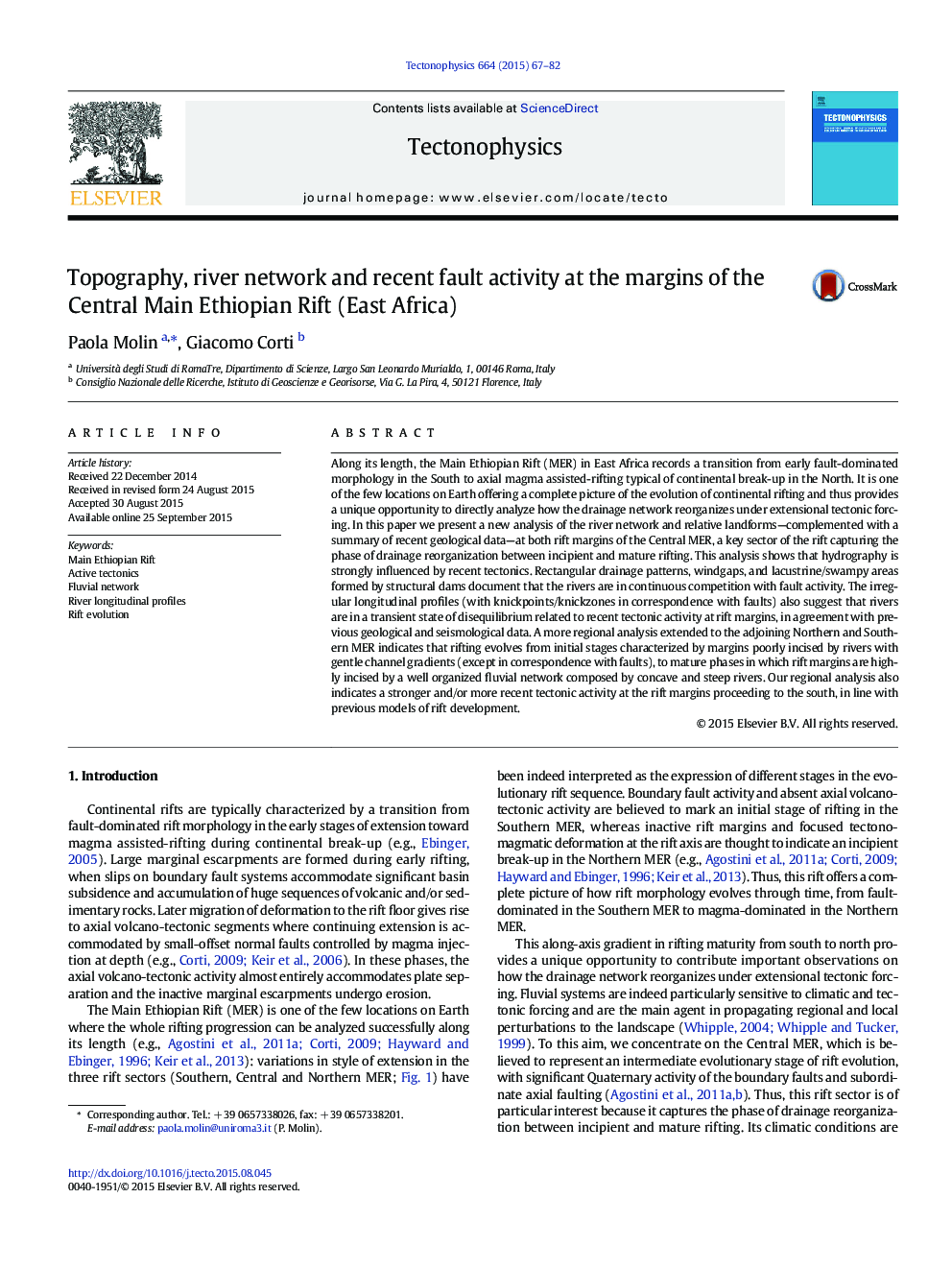| Article ID | Journal | Published Year | Pages | File Type |
|---|---|---|---|---|
| 6433582 | Tectonophysics | 2015 | 16 Pages |
â¢We analyze fluvial network and tectonic activity at the margins of the Central Main Ethiopian Rift.â¢Hydrography and morphology are strongly influenced by recent tectonics.â¢Hydrographic varies according to a transition from incipient to mature rifting.â¢Our data indicate a stronger and/or more recent activity proceeding to the south.
Along its length, the Main Ethiopian Rift (MER) in East Africa records a transition from early fault-dominated morphology in the South to axial magma assisted-rifting typical of continental break-up in the North. It is one of the few locations on Earth offering a complete picture of the evolution of continental rifting and thus provides a unique opportunity to directly analyze how the drainage network reorganizes under extensional tectonic forcing. In this paper we present a new analysis of the river network and relative landforms-complemented with a summary of recent geological data-at both rift margins of the Central MER, a key sector of the rift capturing the phase of drainage reorganization between incipient and mature rifting. This analysis shows that hydrography is strongly influenced by recent tectonics. Rectangular drainage patterns, windgaps, and lacustrine/swampy areas formed by structural dams document that the rivers are in continuous competition with fault activity. The irregular longitudinal profiles (with knickpoints/knickzones in correspondence with faults) also suggest that rivers are in a transient state of disequilibrium related to recent tectonic activity at rift margins, in agreement with previous geological and seismological data. A more regional analysis extended to the adjoining Northern and Southern MER indicates that rifting evolves from initial stages characterized by margins poorly incised by rivers with gentle channel gradients (except in correspondence with faults), to mature phases in which rift margins are highly incised by a well organized fluvial network composed by concave and steep rivers. Our regional analysis also indicates a stronger and/or more recent tectonic activity at the rift margins proceeding to the south, in line with previous models of rift development.
